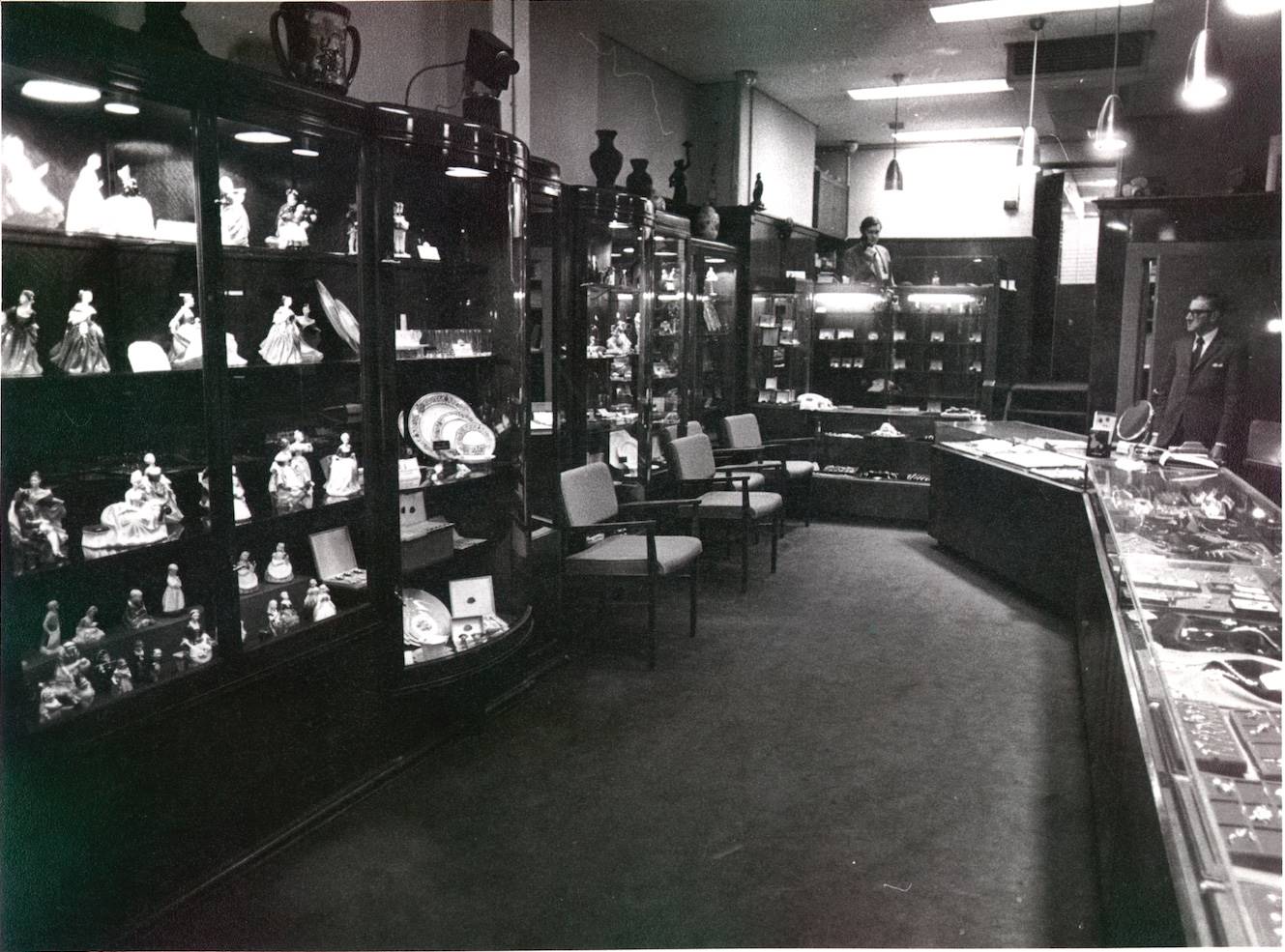 FOUNDED BY Percy Marks
FOUNDED BY Percy Marks
ESTABLISHED 1899
LOCATION Sydney, NSW
» VISIT PERCY MARKS
» VIEW PHOTOS: FROM THE FAMILY ALBUM
 Percy Marks was established in Sydney in 1899 and is one of Australia’s most respected family jewellery businesses, with four generations of the Marks family standing behind it.
Percy Marks was established in Sydney in 1899 and is one of Australia’s most respected family jewellery businesses, with four generations of the Marks family standing behind it.
Its founder, the jewellery designer Percy Marks, played a singular role in the acceptance of Australian opal as the country’s national gemstone. Born in 1879 in Wellington, he came from a family of jewellers, whose origins were in New Zealand and the UK.
He was enrolled in the Sydney Technical College as early as 1894 and apprenticed to the Sydney jeweller Richard (R.H.) Jenkins of Market Street. Five years later, Marks opened his first shop on the same street.
He became a public figure – occasionally described as ‘The Opal King’ – through his promotion of what he called ‘dark opal’, that is, opal with a dark body colour such as black, grey, blue, or green, distinguishing it from the more common paler forms of the gemstone.
Marks explained in an interview that he first become aware of ‘dark opal’ in 1900; however he did not actively work with the gemstone until 1907 when he went to Lightning Ridge and returned “with two suitcases packed with the most glorious opal I have ever seen in one lot”.
Opal was not a popular gemstone at the turn of the century and Marks candidly stated, “My problem was to find a market.”
Promoting it as Australia’s national gemstone, he discounted the superstition that opal was unlucky, and made a collection for public display; his genius in marketing is perhaps his greatest legacy to Australia’s jewellery history.
Marks designed and distributed opal jewellery and exotica to a roll call of international visitors and major and minor aristocracy, as well as Australian celebrities.
Among those gifted Percy Marks’ opal jewellery were the likes of ballerina Anna Pavlova and opera singer Dame Nellie Melba.
One magnificent bracelet – presented to Alice Rawson, daughter of former NSW Governor Vice-Admiral Sir Harry Holdsworth Rawson, in 1909 – was acquired by Sydney’s Powerhouse Museum in 2020 and is described as one of the finest surviving Australian-made jewellery pieces of the early 20th Century.
By the 1930s, Australian opal was celebrated in poetry and dance as well as in jewellery settings. At his most energetic, it seemed no Sydney visitor was safe from a Percy Marks opal presentation!
In 1919, the NSW State Government commissioned him to inquire into the marketing of opals in Europe and North America.
He exhibited his collection at the Foire Internationale de Lyon and in Paris, France, and presented collections of rough and cut opal to eight French museums and mining schools.
In 1925 the French government appointed him Officier d’Instruction Publique.
Believing the opal trade was being hampered by miners demanding excessive prices, he suggested in his report that a small advisory board be appointed by the government to protect and harmonise the respective interests of miners, jewellers and the public.
Toward the end of his life, Marks seemed to sense his mortality and the jeweller’s munificence grew.
In 1933, he proposed to make a white marble, opal-set monument as a gift for the Prime Minister to accept on behalf of the Commonwealth.
However, the monument proposal’s fate is unknown, and he died two years later – the same year he was awarded King George V's Silver Jubilee medal. He was survived by his wife, Eliza Robinson Barton, and their four sons – two of which took over the business.
Ultimately, Percy Marks’ opal campaign was wildly successful. The prominence that he gave opal was embraced and extended by other jewellers.
Today, the Percy Marks jewellery business is run by myself, Cameron Marks, Percy’s great-grandson.
Our expertise extends from being the first purveyor of Australian black opals to all the rare and magnificent gems that are unique to Australia – from lustrous South Sea pearls to the most highly-prized Argyle pink diamonds.
Percy Marks collections feature an extensive range of gemstones and fully certified diamonds, each individually selected for their outstanding beauty and quality.
 | 
Above: Cameron Marks, managing director, Percy Marks.
Left: Inside the Percy Marks store at 49 Castlereagh Street in the Sydney CBD.
|
 | Left: A crowd assembles outside the Percy Marks jewellery store. |
 |
Left: Percy Marks is escorted by police as he carries jewellery from one store to another. |
 | Left: Newspaper clipping describing Percy Marks' presentation of an Australian red wood, gold, and black opal baton (below) to John Philip Sousa, a famous American composer and band leader, in 1911. |
 |
 | Left: An Australian black opal brooch crafted by Percy and given to his wife, Eliza Robinson Barton. |
 | Left: Newspaper article describing the acquisition of a Percy Marks bracelet set with sapphire, zircon, tourmaline, garnet, opal, and diamond (below), gifted to Alice Rawson, daughter of Vice-Admiral Sir Harry Holdsworth Rawson, in 1909. |
 | |
 |
Left: The reverse of the Alice Rawson bracelet, showing Percy Marks' mark at the base. The bracelet was acquired by Sydney's Powerhouse Museum (Museum of Applied Arts and Sciences) in 2020 and is described as "among the finest surviving Australian-made jewels from the early 20th Century". |
read emag